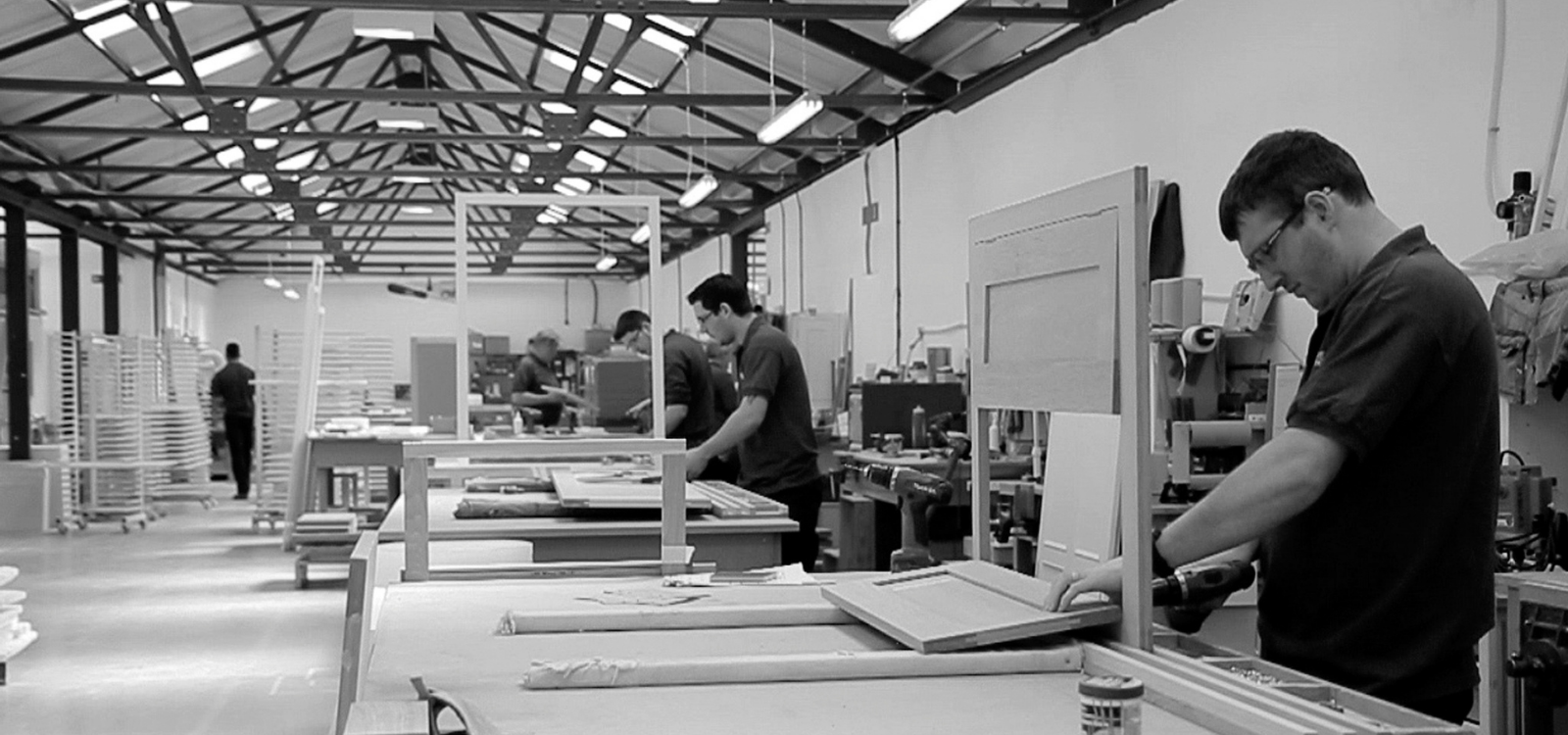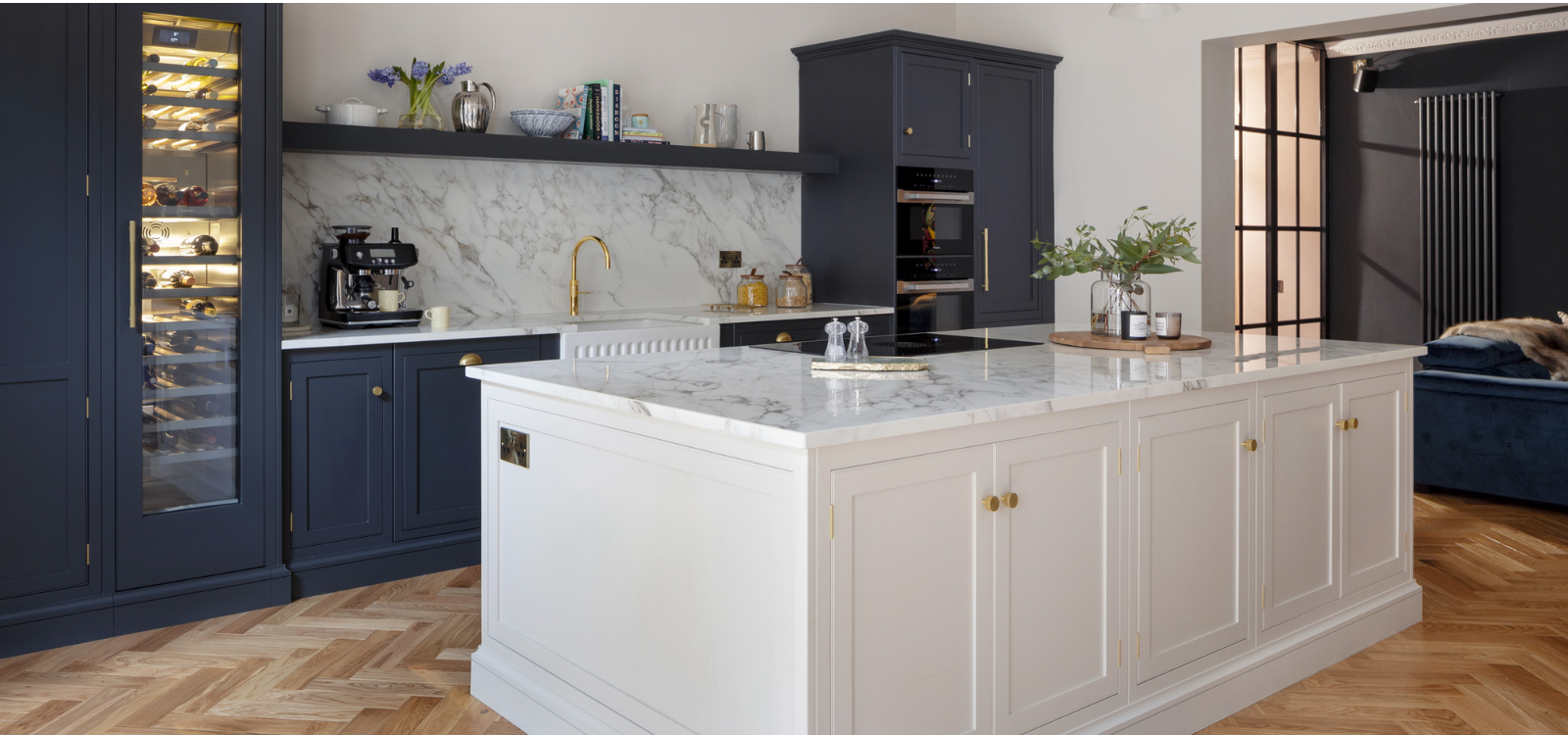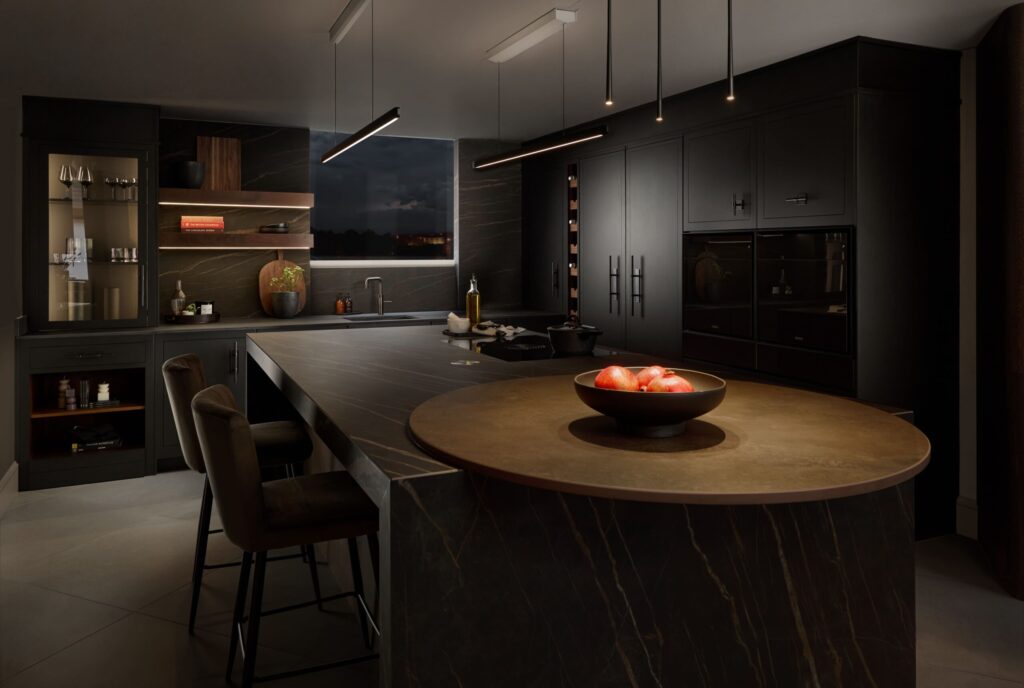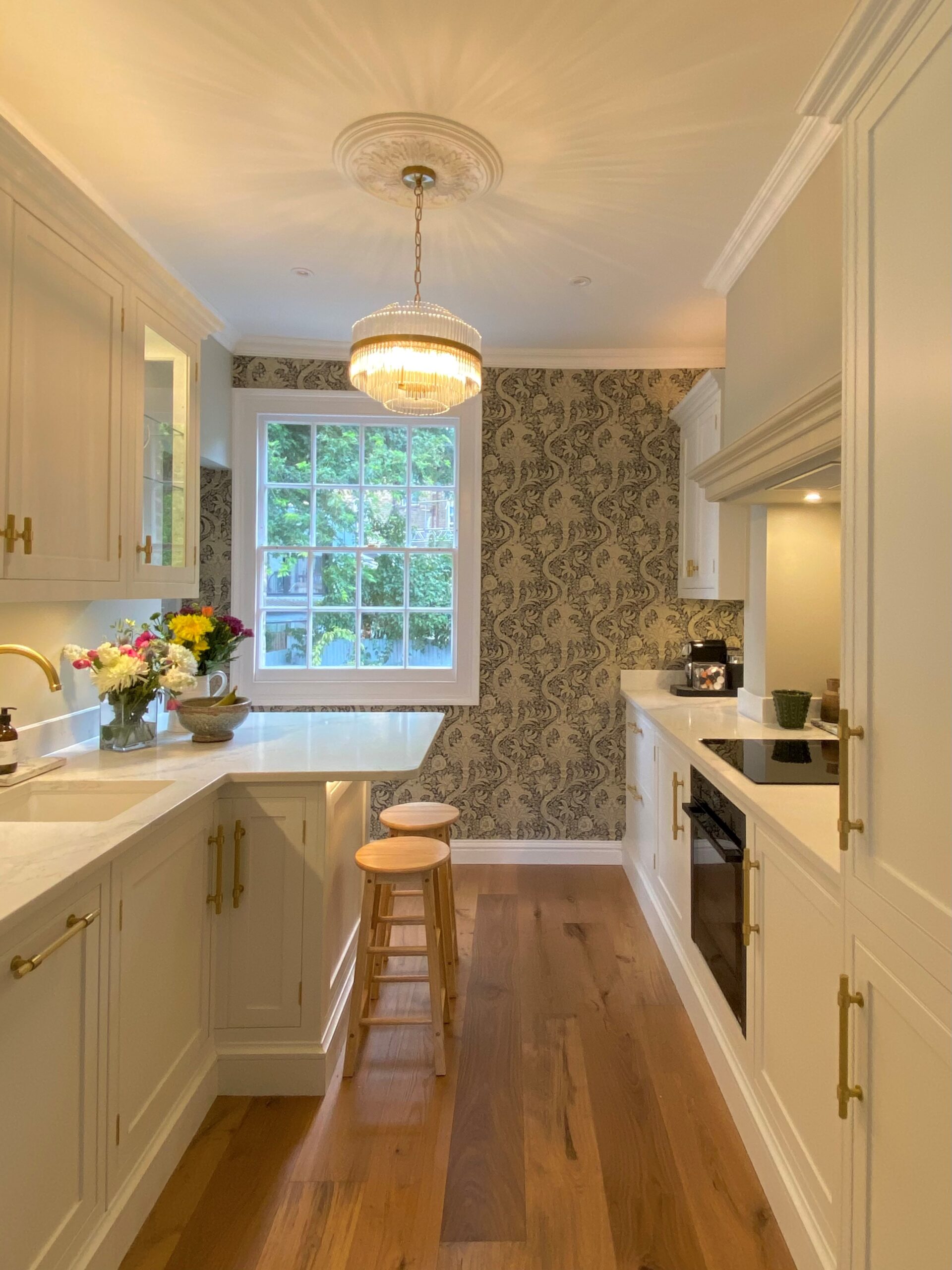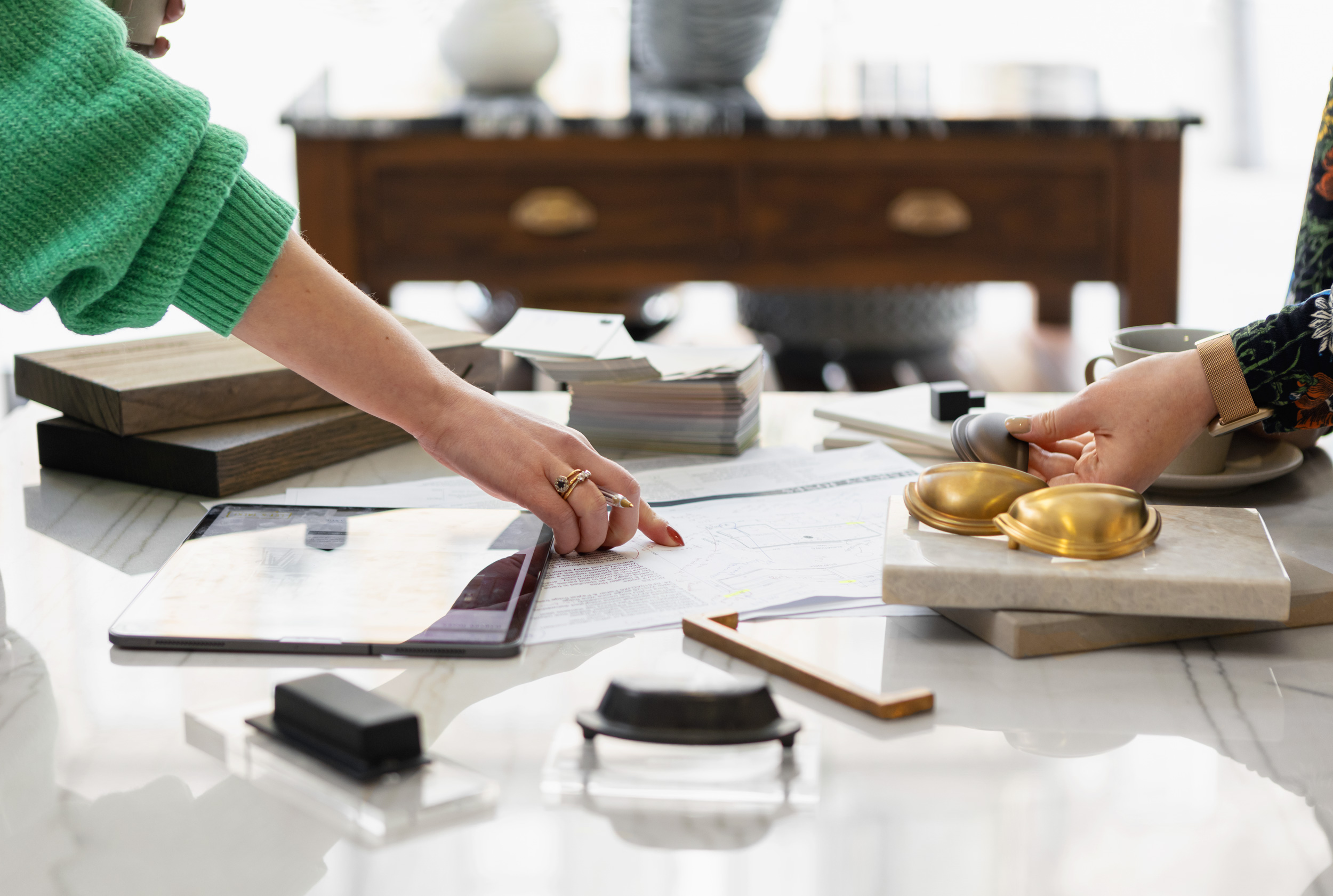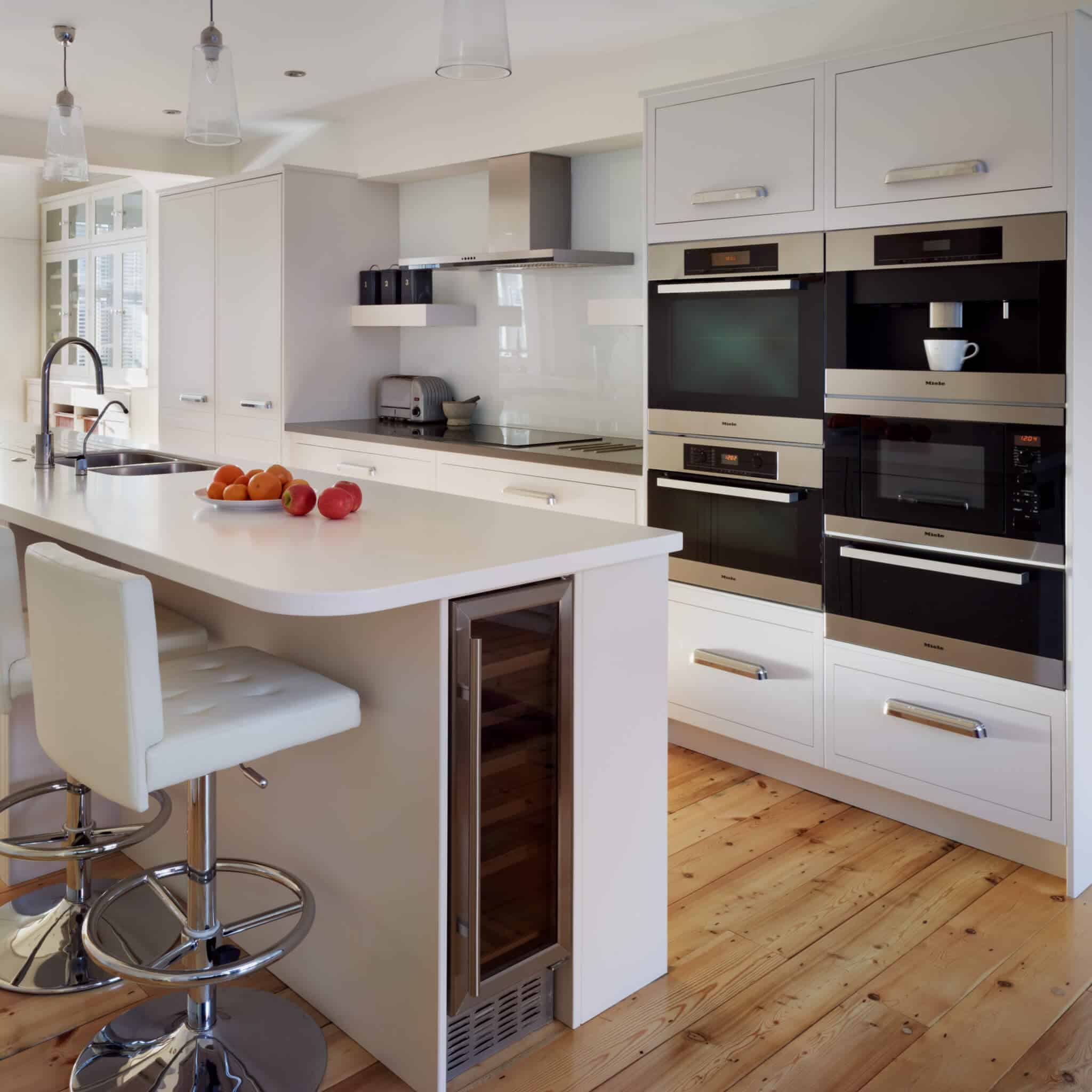
We are best-known for our ‘primed for painting’ cabinetry that can be painted in any colour of your choice. This gives you limitless options in terms of the look you can achieve in your room. However, many clients choose to paint at least some of the kitchen in a shade (or shades) of white. Far from being a bland and uninteresting option, white cabinetry is a clever choice if you’re looking for a kitchen that radiates style but that is unlikely to date too quickly. While you might think white is a simple choice, in fact there are many subtle shades to choose from, so no white kitchen is exactly like another. The look of the cabinetry itself can also vary quite dramatically, whether you’re opting for flat-fronted Linear cabinetry, simple, clean lined Shaker or even the more decorative Original, it’s a great base on which to build and accessorise to create a unique scheme.
If you have a big, lively family and the thought of keeping an all-white kitchen spick and span fills you with dread, then you can lessen the impact with contrasting worksurfaces and glass splashbacks that will help you to cut down on maintenance. Darker granites and quartz tops or natural timber won’t require too much up-keep and, more importantly will add definition to an all white design. It will also help to prevent an overly sterile look that can sometimes be the result of using white everywhere.
For those of us that might be a little wary about bright colours and exotic timbers and textures, white cabinetry is an excellent starting point and can be accesorised to suit your taste with ease. Pairing your scheme with white walls, worksurfaces and floors can result in the dreaded ‘clinical’ feel that’s more reminiscent of an “operating theatre” than a working kitchen so, unless you’re actually after that feel it’s best avoided. Instead, think about complementing the white with at least one element – wall, floor or worktops – with either colour or texture. For the price of a few litres of paint and a little elbow grease you can add a vibrant feature wall that can be changed yearly to keep the look fresh. Your choice of flooring can help to give a scheme depth, too, and engineered wood, porcelain and ceramic tiles are all hardwearing, easy-to-maintain options and depending on the shade, sheen and texture you go for, they can create a warming counterpoint to matt white cabinets.
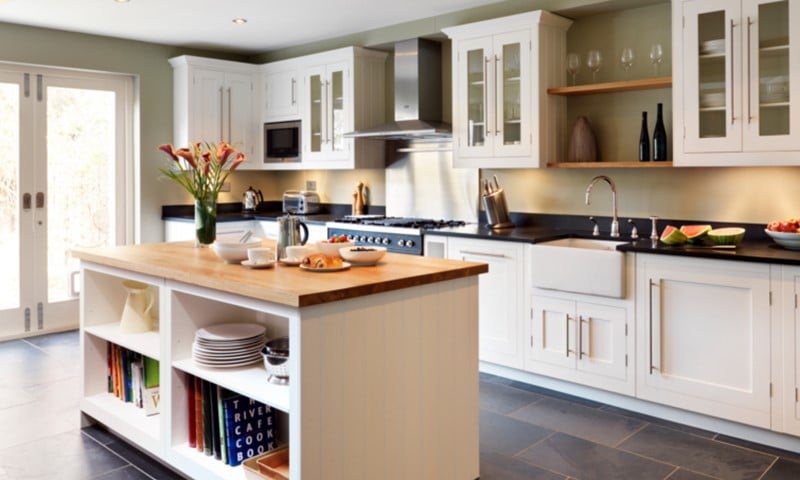
TOP TIPS FOR A WHITE KITCHEN DESIGN
1. PICK THE RIGHT WHITE
There are so many different shades of white available; Farrow & Ball alone have more than 15 white or off-white options. In the same way as you would use a selection of tester pots on a wall to see how the colour changes throughout the room, it’s a good idea to do the same for cabinetry. Depending on the aspect and availability of natural light in your kitchen you might be better off selecting a soft white, creamy white, grey white or even a cool ice white.
2. MIX AND MATCH
Add interest to an all-white design by combining a contrasting style of cabinetry – for instance in-frame Shaker for the base units and flat, modern Linear cabinets on the walls. Decorative pilasters and creating breakfronts or steps in the base cabinetry will also help to break up a long run of cabinetry. Adding a bank of steel appliances to a floor-to-ceiling wall of units is not just a convenient way of zoning your cooking area, it also helps to break up what could be large expanses of white units.
3. PLAY WITH DISPLAY
Glass-fronted wall units or open shelving are great ways to create interest without including too much colour if you’re not a fan. Carefully curated open shelving showing off precious pieces and collections of crockery, pictures or glassware can make all the difference, although it will require a little more upkeep than closed cupboards.
4. WORK IT WITH WOOD
Timber elements can really help to soften a white kitchen and work particularly well with a Shaker design – think wooden trinket drawers, slot-in trays, open wooden shelving, timber worktops and handles. Just remember less is more – if you incorporate wooden worktops then be careful how many other elements you add in and ensure that if you’re using timber in several different areas, that it is all of the same shade to avoid it feeling muddled.
5. ACCESSORISE, ACCESSORISE, ACCESSORISE
Photshoots in glossy magazines often look so fabulous because they’re dressed well, showing off co-ordinated small appliances, crockery and furniture at their best. It’s not a look that’s difficult to achieve though and can be particularly striking against a white base. Pick a colour you’re happy with and that contrasts enough to make a difference and then go for it. Feature walls are a good place to start, then you can treat yourself to new small appliances in the shade of your choice. Also, consider adding pattern and texture with fabrics for curtains and blinds. In open-plan kitchen diners, this accent colour can help to link areas such as dining and living to give the whole space a co-ordinated yet zoned feel.
Looking for colour inspiration? or perhaps you’ve got a clearer idea of the kind of colour you’d like in your new room? Each of our showrooms display a selection of our kitchens in a variety of colours – and our designers will be pleased to show you examples of designs they’ve worked on that feature the kind of shades you like. Speak to a designer in your local showroom by calling 0800 389 6938 or click here to book your complimentary design consultation.

